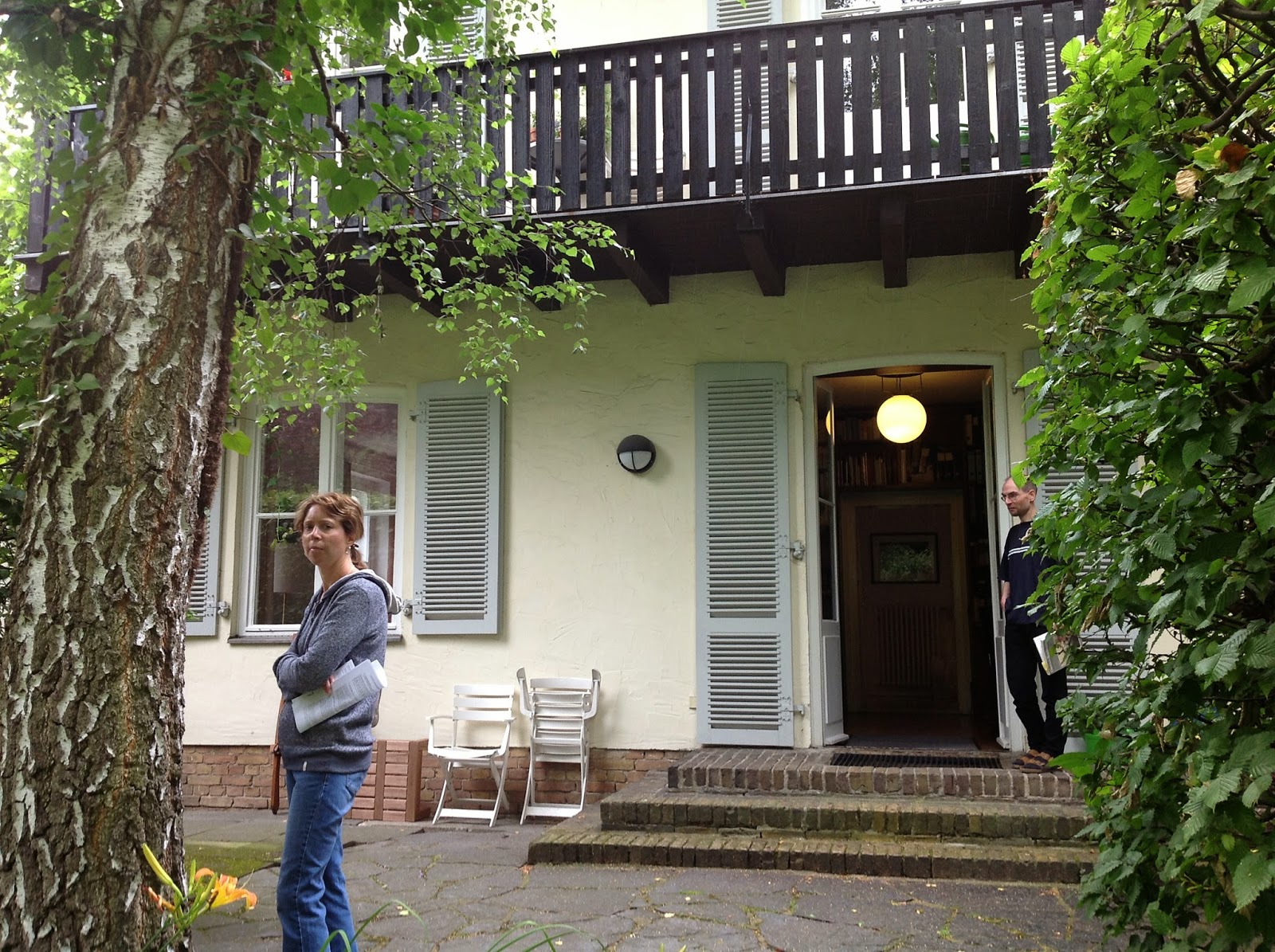One issue driving my interest in Bonhoeffer has been (ironically) the disembodied way in which the most "this worldly" of theologians has often been portrayed. Charles Marsh's recent biography, Strange Glory, which I am currently reading, is one of the few books I know to try to fill that gap. My book does the same, though with a focus on women and relationships, trying to put flesh--incarnation--into the people and the places in his life.
Reading Marsh's book, I was arrested by a photo labelled "Karl and Paula's new home at Marienburger Allee 43 in Berlin-Charlottensburg."
 |
| Proud homeowners today would not depict their brand new house as a blast from the past. |
At first, I was merely stopped by the image's romantic, hazy tone (is it perhaps a painting?), which places the house in woodsy, overgrown setting with no other structures in sight. The house seems set in the remote countryside, not in a neighborhood of other new houses near the middle of Berlin. It also looks old and quaintly picturesque, while the overcast sky adds an eerie cast.
The house, which I visited in 2012, sits at the end of a quiet street, with woods and an apartment complex to one side. When first built, only woods stood to the home's left as you face it. And perhaps the house next door, out of view on the right, home of Bonhoeffer's sister Ursula and her husband and children, had not yet gone up.
The house in the romantic image doesn't conform to the facade you can see in the modern photo above: flat and with three dormered attic windows across the orange tiled roof. Further, the house today looks newer 80 years after it was built than in the romantic image made of it when brand new. The lamppost, sidewalk and curb help locate the modern house in a neighborhood.
Perusing my own photos, I realized the romantic photo must show the back of the house. Through the overgrowth, one can see the glassed in breakfast porch jutting out and the still existing balcony above the ground floor level. The double window in the attic on the side of the house would look into Bonhoeffer's bedroom and into the back yard of his sister's house, the place where Bethge would look down at Bonhoeffer's niece, Renate, who he would eventually marry.
 |
| This is how the back facade looks now, You can see the second-story balcony depicted in the early photo. |
 |
| The Bonhoeffers posed in March, 1943 against the back facade, the same facade as in the photo right above. |
 |
| The sunporch today, furnished differently than in Bonhoeffer's day. You can see it through the overgrowth in the romantic photo. |
Today the house's flat back yard is closely cut and neatly kept, with no wild overgrowths. The home has an austere look--angular surfaces, everything well trimmed. But what did the Bonhoeffers perceive when they moved in at the end of 1935? Much as they were critics of the Nazi regime--though privileged to be able to live in such a neighborhood--did they see--or want to see a romantic hundred-year old volkish cottage in the woods, where we (or I) see a home built on balanced, Classical lines?
By the time World War II was in full swing, the back yard we encounter today as a flat sheath of grass had been planted into a garden that included raspberries--perhaps some of the brambly bushes in the early photo are raspberries?--peas, a myriad of vegetables and even an experiment with tobacco.
 |
| The backyard today. If only it had been included in the 1943 photo, we'd see it planted into the garden that helped to feed Bonhoeffer and his brother-in-law in prison. |
The photo in the Marsh book reminds us that what we see today is not what the Bonhoeffers' saw then; how we view the world is not necessarily the lens they used. How people, including Bonhoeffer perceived the world--what they literally saw around them and how it influenced them --continues to fascinate me.


No comments:
Post a Comment